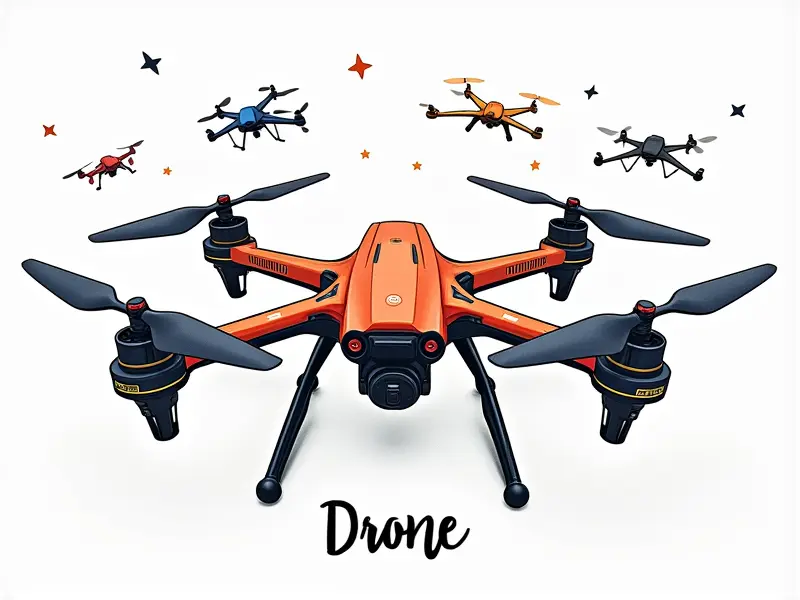How to tune a quadcopter PIDs?

Mastering Quad PID Tuning Quickly
Tuning the Proportional Integral Derivative (PID) parameters of your quadcopter is crucial for achieving stable and responsive flight. This guide will walk you through the process of fine-tuning your quad's PIDs to ensure optimal performance.
Fast Track Quadcopter PID Setup
The first step in tuning your quadcopter’s PIDs is setting up a baseline configuration that allows for smooth and stable flight. Start by adjusting the pitch, roll, yaw, and throttle PIDs separately:
- Pitch: Adjust the pitch PID to ensure quick response without oscillation.
- Roll: Fine-tune the roll PID for rapid lateral movement without overshooting.
- Yaw: Calibrate the yaw PID to achieve precise and smooth turns.
- Throttle: Set the throttle PID so that your quadcopter ascends or descends smoothly without sudden jerks.
Quick Guide to Perfect PID Tuning
To quickly perfect your quadcopter’s PIDs, follow these steps:
- Benchmark Initial Values: Start with recommended default values for each PID parameter.
- Test Flight: Fly the quadcopter to observe its behavior and identify areas needing adjustment.
- Analyze Data: Use flight data logs to pinpoint specific issues, such as instability or sluggishness.
- Adjust Parameters: Incrementally tweak PIDs based on observed performance until you achieve smooth flight.
Rapid PID Calibration for RC Quads
Faster calibration of your quadcopter’s PIDs can be achieved through a systematic approach. Begin with basic tests to establish stability and then proceed to more advanced adjustments:
- Basic Tests: Conduct simple maneuvers like hovering, forward/backward movement, and turning.
- Detailed Adjustments: Refine each PID parameter based on the results of your basic tests.
PID Tuning Tips for Smooth Quad Flight
Maintaining smooth flight requires careful tuning of PIDs. Here are some tips to help you achieve this:
- Start Slowly: Begin with small adjustments and gradually increase the range as needed.
- Avoid Over-Tuning: Be cautious not to over-tune your quadcopter, which can lead to instability.
- Monitor Performance: Continuously monitor how each PID adjustment affects overall flight stability and responsiveness.
Speed Up Quadcopter PID Adjustment
To speed up the process of adjusting your quadcopter’s PIDs, use a combination of manual adjustments and automated tools:
- Manual Adjustments: Make incremental changes to each PID parameter based on observed flight characteristics.
- Automated Tools: Utilize software or hardware tools designed for rapid PID tuning to streamline the process.
Efficient PID Setup for Pro Quads
Professional quadcopters require precise and efficient PID setups. Follow these steps to achieve optimal performance:
- Initial Calibration: Start with a thorough initial calibration of all PIDs.
- Data Logging: Use data logging tools to track flight characteristics over time.
- Ongoing Optimization: Continuously refine PID settings based on real-world performance data.
Easy PID Tuning for Your Quadcopter
Tuning PIDs can seem daunting, but with the right approach, it becomes straightforward. Here’s how to simplify the process:
- Understand Basics: Gain a fundamental understanding of how each PID parameter affects flight.
- Follow a Checklist: Use a checklist to ensure you cover all necessary adjustments systematically.
Simple Steps to Tune Quadcopter PIDs
Tuning your quadcopter’s PIDs can be broken down into simple steps. Follow these guidelines for an easy process:
- Identify Issues: Pinpoint specific flight issues that need addressing.
- Adjust Parameters: Make targeted adjustments to the PID parameters responsible for those issues.
- Evaluate Results: Assess how each adjustment impacts overall performance and stability.
Ultimate PID Guide for FPV Racing Quads
FPV racing quads demand high precision and responsiveness. Follow this ultimate guide to achieve the best possible tuning:
- High-Precision Calibration: Use precise measurement tools during calibration.
- Aggressive Tuning: Opt for aggressive PID settings for maximum performance in racing conditions.
Achieving Precision Flight with PID Tuning
The key to achieving precision flight lies in meticulous PID tuning. By following the steps outlined above, you can ensure your quadcopter performs flawlessly under various conditions:
- Consistent Testing: Regularly test and re-tune PIDs to maintain optimal performance.
- Detailed Analysis: Analyze flight data meticulously to identify areas for improvement.
In conclusion, mastering PID tuning is essential for achieving smooth and responsive quadcopter flight. By following the steps outlined in this guide, you can quickly and efficiently tune your quad’s PIDs to achieve optimal performance. Whether you are a beginner or an experienced pilot, these tips will help you get the most out of your quadcopter.

